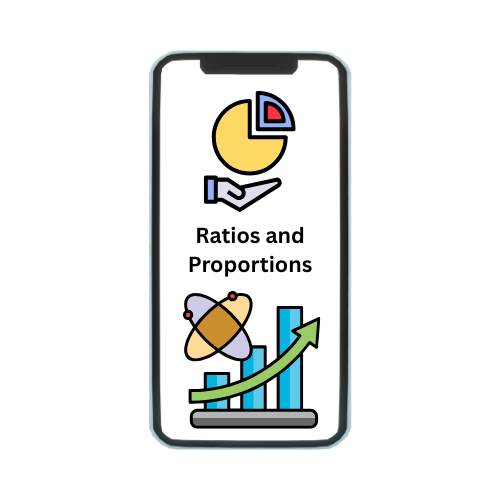Invoice financing is a financial solution designed to help businesses manage their cash flow by using their outstanding invoices as collateral for a loan or advance. Essentially, it allows companies to receive immediate funds based on the value of their unpaid invoices, rather than waiting for their clients to pay. This process typically involves selling or pledging invoices to a lender or a financing company, which then provides a percentage of the invoice amount upfront. The business receives the remaining balance, minus any fees, once the invoice is paid by the client. Invoice financing can be a valuable tool for businesses that face cash flow challenges due to slow-paying customers or need funds for growth opportunities. It offers a way to maintain operational efficiency without waiting for long payment terms or incurring high-interest debt. This financial tool is often used by small and medium-sized enterprises (SMEs) to stabilize their finances, manage working capital, and support business expansion.
What Is Invoice Financing?
Invoice financing is a financial service that allows businesses to access immediate cash flow by leveraging their outstanding invoices. When a business issues an invoice to a client, it typically has to wait for a specified period, sometimes 30, 60, or even 90 days, before receiving payment. Invoice financing provides a way to bridge this gap by enabling businesses to borrow a percentage of the invoice amount from a lender or a specialized financing company. Essentially, the business sells or pledges their invoices to the financing provider, who then advances a substantial portion of the invoice value upfront—usually around 70% to 90%—to the business. Once the client pays the invoice, the financing provider releases the remaining balance to the business, minus a fee for their services. This method of financing is particularly beneficial for companies that experience delays in receiving payments from clients, need to cover immediate expenses, or seek to grow their operations without waiting for invoice settlement. Invoice financing can come in two main forms: factoring and discounting. In factoring, the financing company manages the collection of payments from clients, while in discounting, the business retains control over the collection process. Both options help businesses maintain a steady cash flow and support ongoing financial stability.
How It Fits Into the Financial Landscape
Invoice financing plays a crucial role in the financial landscape by providing businesses with a flexible and accessible alternative to traditional bank loans for managing cash flow. Unlike conventional loans that require extensive credit checks, collateral, or a lengthy approval process, invoice financing offers a quicker and more straightforward solution based on the value of outstanding invoices. This financial tool helps bridge the gap between issuing invoices and receiving payments, which is especially valuable for small and medium-sized enterprises (SMEs) that may struggle with cash flow due to slow-paying customers. By leveraging accounts receivable, businesses can secure immediate funds to cover operational expenses, invest in growth opportunities, or manage seasonal fluctuations without taking on additional debt. Invoice financing also offers a lower barrier to entry compared to other forms of credit, as the primary focus is on the quality of the invoices rather than the business’s credit history. In the broader financial ecosystem, it complements traditional banking products and alternative finance options, offering businesses a way to manage their liquidity more effectively and maintain financial stability. Moreover, with the rise of fintech companies, invoice financing has become more accessible and varied, with options ranging from digital platforms for quick advances to more structured financing arrangements with dedicated providers. This evolution of invoice financing reflects a shift towards more dynamic and inclusive financial solutions that meet the diverse needs of modern businesses.
Types Of Invoice Financing
Invoice financing encompasses several types of financial solutions that businesses can use to manage their cash flow by leveraging outstanding invoices. Each type offers different features and benefits, catering to various business needs and preferences.
- Invoice Factoring
Invoice factoring involves selling outstanding invoices to a factoring company at a discount. The factoring company then takes over the responsibility of collecting payments from the clients. This type of financing provides immediate cash flow and relieves the business from the collection process, allowing it to focus on operations rather than accounts receivable management. Factoring companies charge a fee based on the invoice amount and the creditworthiness of the clients, which can vary depending on the agreement.
- Invoice Discounting
Invoice discounting is a financing arrangement where businesses use their invoices as collateral to secure a loan from a lender. Unlike factoring, the business retains control over the collection of payments from clients. Once the invoices are paid, the business repays the lender the amount advanced plus a fee. This option is ideal for businesses that prefer to manage their client relationships and collection processes independently while still gaining access to immediate funds.
- Spot Factoring
Spot factoring, or single-invoice factoring, allows businesses to sell individual invoices rather than their entire receivables portfolio. This type of financing offers flexibility for companies that need quick cash for specific invoices without committing to a long-term agreement. Spot factoring is beneficial for businesses that encounter occasional cash flow challenges but do not require continuous financing.
- Recourse vs. Non-Recourse Factoring
Invoice factoring can also be categorized into recourse and non-recourse factoring. In recourse factoring, the business remains responsible for any unpaid invoices, meaning the factoring company can reclaim the advance if the client fails to pay. In contrast, non-recourse factoring absolves the business of this responsibility, as the factoring company assumes the risk of non-payment. Non-recourse factoring typically comes with higher fees due to the increased risk for the factoring company.
- Supply Chain Financing
Supply chain financing, or reverse factoring, involves a business arranging for a financing provider to pay its suppliers on its behalf. The business then repays the financing provider at a later date. This type of invoice financing supports suppliers by offering them early payment and can strengthen relationships between buyers and suppliers while extending the buyer’s payment terms.
How Invoice Financing Works
Invoice financing is a financial solution that helps businesses manage their cash flow by using outstanding invoices as collateral for obtaining funds. Here’s a detailed breakdown of how the process works:
- Issuing an Invoice
- What Happens: The business provides goods or services to a client and issues an invoice detailing the amount due, payment terms, and due date.
- Purpose: This invoice represents the amount the business expects to receive from the client.
- Applying for Invoice Financing
- What Happens: The business approaches a lender or financing company to apply for invoice financing.
- Purpose: The business seeks to obtain immediate cash flow based on the value of the outstanding invoice.
- Submitting the Invoice
- What Happens: The business submits the invoice to the financing provider for review.
- Purpose: This step allows the financing provider to verify the invoice’s legitimacy and the creditworthiness of the client.
- Receiving an Advance
- What Happens: The financing provider approves the application and advances a percentage of the invoice amount, typically around 70% to 90%.
- Purpose: The business receives immediate funds to cover operational expenses, invest in growth, or manage other financial needs.
- Managing the Invoice Collection
- What Happens: Depending on the type of invoice financing, either the business or the financing provider handles the collection of payments from the client.
- In Factoring: The financing provider takes over the collection process.
- In Discounting: The business continues to collect payments from the client.
- Purpose: To ensure that the invoice amount is collected and managed efficiently.
Eligibility Criteria For Invoice Financing
Eligibility for invoice financing typically hinges on several key factors that financial providers assess to determine a business’s suitability for funding. Primarily, businesses need to have a track record of issuing invoices to creditworthy clients, as the financing is secured against these receivables. The invoices themselves must be genuine, with clear terms, and from reputable clients who have a history of timely payments. Additionally, businesses should demonstrate a stable financial condition with a reasonable credit history, though this is less stringent than traditional loans. Some providers may require that the invoices be for B2B transactions rather than B2C, as B2B invoices are generally seen as more reliable. The business must also have a clear invoicing process and a system in place for managing accounts receivable, as this supports the verification and collection of payments. Finally, the business should be legally established and operational, with the necessary documentation such as business registration, tax identification, and financial statements readily available for review. Meeting these criteria ensures that the invoices used for financing are legitimate, the business is capable of managing the financing arrangement, and the risk for the financing provider is minimized.
Advantages Of Invoice Financing
Invoice financing offers several advantages for businesses seeking to manage cash flow and support growth. Here’s a detailed look at the key benefits:
- Immediate Cash Flow
- Advantage: Businesses receive an advance on their invoices quickly, providing immediate funds to cover operational expenses, invest in growth, or manage cash flow gaps.
- Explanation: This rapid access to cash helps businesses avoid financial strain and capitalize on opportunities without waiting for clients to pay.
- Improved Cash Flow Management
- Advantage: Invoice financing helps smooth out cash flow by converting unpaid invoices into available funds.
- Explanation: This approach stabilizes finances and ensures that businesses have the liquidity needed for day-to-day operations and strategic investments.
- No Need for Collateral
- Advantage: Unlike traditional loans, invoice financing doesn’t require additional assets or collateral beyond the invoices themselves.
- Explanation: This makes it accessible for businesses that may not have significant physical assets but have valuable receivables.
- Flexible Financing Options
- Advantage: Businesses can choose from various types of invoice financing, such as factoring, discounting, or spot factoring, based on their specific needs.
- Explanation: This flexibility allows businesses to select a solution that best fits their financial situation and growth plans.
- Quick Approval Process
- Advantage: The application and approval process for invoice financing is generally faster and simpler compared to traditional bank loans.
- Explanation: This speed enables businesses to access funds quickly, which is crucial for seizing time-sensitive opportunities or addressing urgent financial needs.
Steps To Apply For Invoice Financing
Applying for invoice financing involves several key steps to ensure a smooth process and secure the necessary funds. Here’s a detailed breakdown of the steps involved:
- Assess Your Financing Needs
- What to Do: Evaluate your cash flow requirements and determine how much funding you need based on your outstanding invoices.
- Purpose: To ensure you request the right amount of financing and understand how invoice financing will address your specific financial needs.
- Prepare Your Invoices
- What to Do: Gather and organize your outstanding invoices that you plan to use for financing.
- Purpose: To provide the necessary documentation for the financing provider to review and assess the value of your receivables.
- Research Financing Providers
- What to Do: Research different invoice financing companies or lenders to find one that offers suitable terms and conditions for your needs.
- Purpose: To select a provider that aligns with your financial goals, offers competitive rates, and has a good reputation.
- Submit an Application
- What to Do: Complete and submit an application to the selected invoice financing provider.
- Purpose: To initiate the process of obtaining financing by providing information about your business, invoices, and financial situation.
- Provide Required Documentation
- What to Do: Submit documentation as requested by the financing provider, which may include business registration, financial statements, tax ID, and invoices.
- Purpose: To verify your business’s legitimacy, financial health, and the validity of the invoices.
- Undergo a Credit Check
- What to Do: The financing provider will perform a credit check on your business and possibly on your clients.
- Purpose: To assess the creditworthiness of your business and the reliability of the clients responsible for paying the invoices.
- Review Terms and Conditions
- What to Do: Review the terms and conditions of the invoice financing agreement, including advance rates, fees, and repayment terms.
- Purpose: To ensure you understand the costs, terms of the agreement, and any obligations or responsibilities involved.
- Sign the Agreement
- What to Do: Sign the invoice financing agreement to formalize the terms and conditions of the financing arrangement.
- Purpose: To enter into a legally binding agreement that outlines the terms of the financing and sets expectations for both parties.
- Receive the Advance
- What to Do: Once the agreement is signed and the invoices are verified, the financing provider will advance a percentage of the invoice amount to your business.
- Purpose: To provide you with the immediate funds needed to manage your cash flow or invest in business opportunities.
- Manage Invoice Collection
- What to Do: Depending on the type of invoice financing, either manage the collection process yourself or let the financing provider handle it.
- Purpose: To ensure the invoices are paid and to fulfill the terms of the financing arrangement.
- Repay the Advance and Fees
- What to Do: Once the client pays the invoice, repay the financing provider the advance amount plus any applicable fees or interest charges.
- Purpose: To complete the financing process and settle your obligations with the financing provider.
- Review and Renew (Optional)
- What to Do: Assess the outcome of the financing arrangement and consider renewing or adjusting the terms for future financing needs.
- Purpose: To maintain or improve cash flow management and adapt to evolving business requirements.
Factors To Consider Before Choosing The Invoice Financing Option
Selecting the right invoice financing option requires careful consideration of several factors to ensure that the choice aligns with your business’s financial needs and goals. Here are the key factors to evaluate before choosing an invoice financing option:
- Type of Invoice Financing
- What to Consider: Decide between different types of invoice financing, such as factoring, discounting, spot factoring, or supply chain financing.
- Why It Matters: Each type has distinct features; for example, factoring includes collection services, while discounting allows you to retain control of collections. Choose the option that best fits your business’s operational needs and preferences.
- Cost of Financing
- What to Consider: Compare the costs associated with different financing options, including advance rates, fees, and interest rates.
- Why It Matters: Understanding the cost structure helps you evaluate the overall expense of the financing service and ensure it is cost-effective for your business.
- Advance Rate
- What to Consider: Look at the percentage of the invoice value that the financing provider will advance upfront.
- Why It Matters: Higher advance rates mean more immediate cash flow for your business. Make sure the advance rate offered meets your cash flow requirements.
- Repayment Terms
- What to Consider: Review the terms related to the repayment of the advance, including payment schedules and any associated fees.
- Why It Matters: Clear repayment terms are crucial for managing your cash flow and ensuring you can meet your financial obligations.
- Financing Provider’s Reputation
- What to Consider: Research the reputation and reliability of the financing provider, including reviews, customer feedback, and industry standing.
- Why It Matters: A reputable provider will offer better service and terms, while a poor reputation might indicate potential issues.
Conclusion
In conclusion, invoice financing is a powerful financial tool that can significantly enhance a business’s cash flow management and support its growth objectives. By understanding the various types of invoice financing—such as factoring, discounting, and spot factoring—businesses can select the option that best aligns with their specific needs, whether it’s for immediate cash flow, improved supplier relationships, or flexible financing solutions. Evaluating key factors such as the cost of financing, advance rates, repayment terms, and the reputation of financing providers is crucial to making an informed decision that ensures financial stability and supports long-term business goals. Additionally, considering the impact of invoice financing on client relationships, credit scores, and legal terms helps businesses choose an option that fits seamlessly into their existing operations and future plans. With careful consideration and a strategic approach, businesses can leverage invoice financing not just as a temporary fix for cash flow issues but as a strategic tool for sustainable growth and operational efficiency. Ultimately, invoice financing offers a flexible and scalable solution that enables businesses to bridge gaps in their cash flow, seize new opportunities, and maintain financial health, making it an invaluable option in the broader financial landscape.






